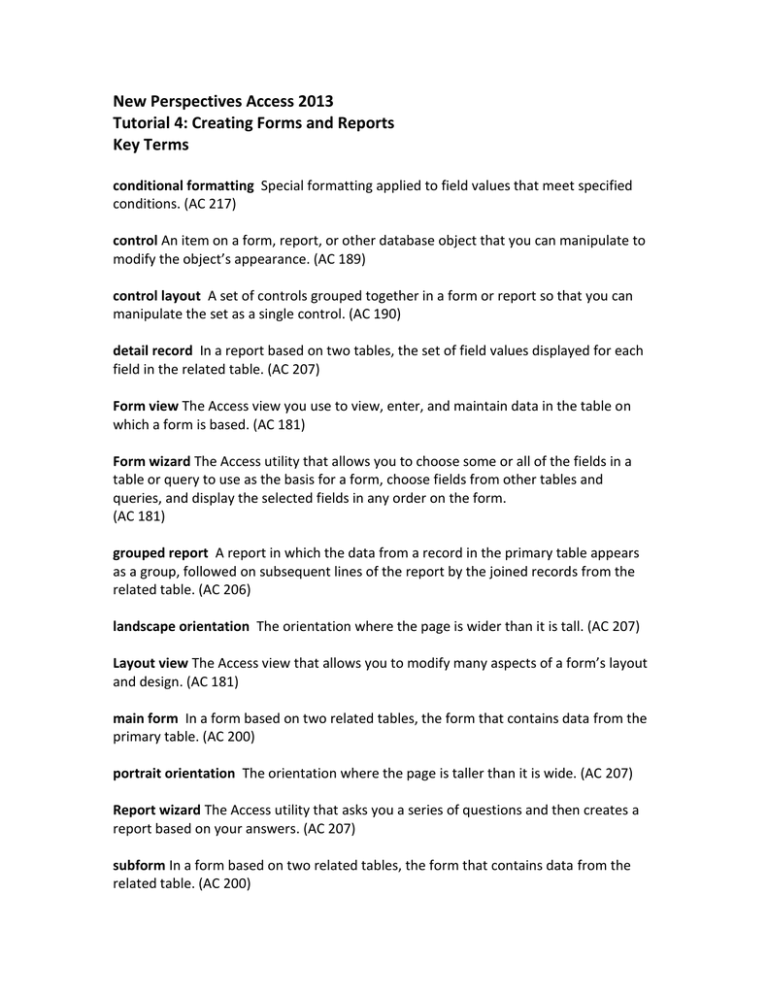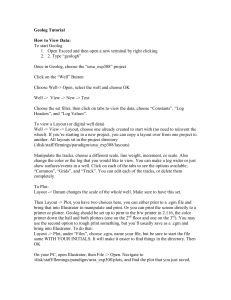New Perspectives Access 2013 Tutorial 4: Creating Forms and Reports Key Terms
advertisement

New Perspectives Access 2013 Tutorial 4: Creating Forms and Reports Key Terms conditional formatting Special formatting applied to field values that meet specified conditions. (AC 217) control An item on a form, report, or other database object that you can manipulate to modify the object’s appearance. (AC 189) control layout A set of controls grouped together in a form or report so that you can manipulate the set as a single control. (AC 190) detail record In a report based on two tables, the set of field values displayed for each field in the related table. (AC 207) Form view The Access view you use to view, enter, and maintain data in the table on which a form is based. (AC 181) Form wizard The Access utility that allows you to choose some or all of the fields in a table or query to use as the basis for a form, choose fields from other tables and queries, and display the selected fields in any order on the form. (AC 181) grouped report A report in which the data from a record in the primary table appears as a group, followed on subsequent lines of the report by the joined records from the related table. (AC 206) landscape orientation The orientation where the page is wider than it is tall. (AC 207) Layout view The Access view that allows you to modify many aspects of a form’s layout and design. (AC 181) main form In a form based on two related tables, the form that contains data from the primary table. (AC 200) portrait orientation The orientation where the page is taller than it is wide. (AC 207) Report wizard The Access utility that asks you a series of questions and then creates a report based on your answers. (AC 207) subform In a form based on two related tables, the form that contains data from the related table. (AC 200) wildcard character A placeholder you use when you know only part of a search value or when you want the search value to start or end with a specific character or match a certain pattern. (AC 195)
